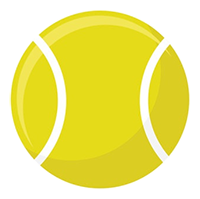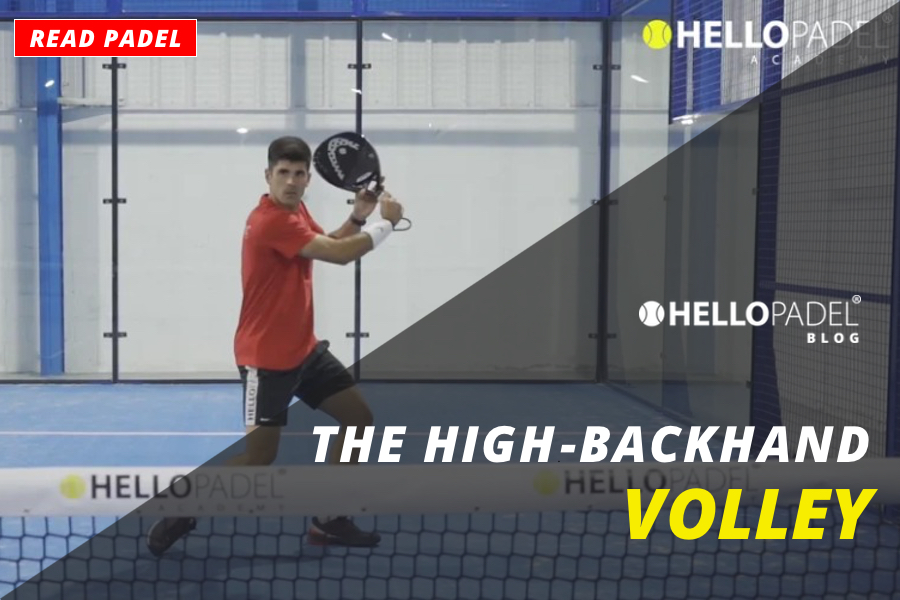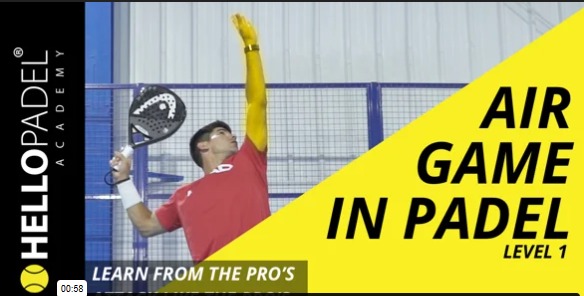1. INTRODUCTION
A high and slow ball when the opponents are on the volley could seem, a priori, a real “gift”. However, if we are able to direct this ball to their backhand volley, not only will they not be able to attack us, but they will also have to play it very well if they do not want to lose the initiative at the net.
The high backhand volley is, without a doubt, one of the most difficult strokes to execute successfully and not lose position at the net.
In this article we will try to give some tips on how to play it when it is hit to us.
2. HIGH BACKHAND VOLLEY TECHNIQUE
– Rather short preparation.
Even if we make a long preparation, we will never be able to generate a lot of force and speed to the ball, so the most advisable thing to do is to make a short set-up to achieve a clean and controlled impact.
– Forward contact point.
Impacting the ball in front of the line of our body will ensure that the ball takes a downward trajectory.
If the point of contact is too far back, unless we are able to perform a very forced wrist strike (extension), our ball will float upwards, which will cause it to bounce a lot or even cause the opponents to move forward to volley it.
– Weight of the body in the direction of the ball.
In this way, after hitting the ball, our body will already take the direction towards the position we have to occupy to cover holes, which will save us some time.
3. TACTICS ON THE HIGH BACKHAND VOLLEY
– Slow down the speed of the ball.
With a high backhand volley, unlike a high forehand volley, we are not going to be able to hit the ball fast enough to win the point. For this reason, the best thing to do is to slow down the speed of the ball so that it doesn’t generate too much bounce and so that the opponent doesn’t get a high and easy ball and win the initiative.
– Play the same opponent who has thrown the ball to us.
In this way both we and our partner will be well positioned to cover the court.
If we change the direction of the ball and throw it to the other opponent, we will be creating space and both we and our partner will have to move to another position to cover the space created. Therefore, we should only change the direction of the ball when it is clear that this will benefit us.
– Look for the side wall or the fence.
If we have to play it cross court (following the previous point) we will look for the fence or, at least, the side wall so that the ball is a little more complicated for the opponent and we have a little more time.
If we have to play it parallel, the ideal would be for the ball to be as close as possible to the side wall, but this involves a lot of risk, so we will have to evaluate how close to the glass I think I can throw it without missing it. Better a ball closer to the centre than a missed ball.
4. CONCLUSION
We believe it is clear that this stroke, despite being at the net and the ball coming to us slowly, it is not an attacking stroke, but rather a position stroke or neutral stroke.
Remember that, if it is our turn to hit this shot, the aim is to get through this awkward situation without losing our position at the net and wait for the next ball to see if we can do some more damage with it.
If, on the other hand, we are the ones trying to hit a high ball to the opponents backhand volley, we have to take into account and assume that, if we make a mistake in the direction, we will be leaving an easy and high ball for his forehand volley, with which he can attack us with a viper, a powerful flat volley or even a smash depending on the height of our ball.
And you, do you see yourself capable of trying to play this ball successfully in a match?


 Upgrade now
Upgrade now





